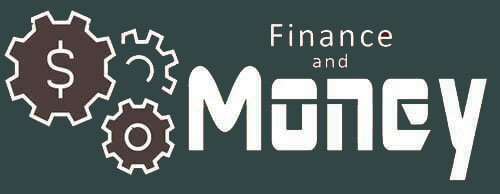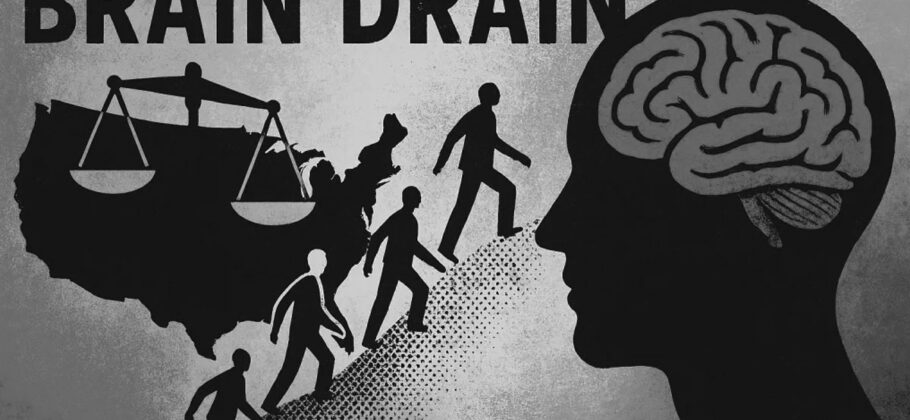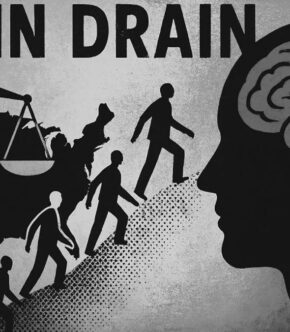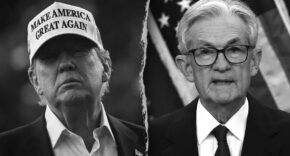For nearly a century, the United States has been the global epicenter of scientific advancement, drawing the best minds from every continent. From Silicon Valley to NASA, from Harvard to Stanford, it was the destination for dreamers, inventors, and builders. But that is changing. Fast.
A wave of deep budget cuts, immigration restrictions, and political hostility toward academia has triggered what many are calling a “brain drain” – a mass departure of highly skilled scientists and engineers. Countries like Canada, Germany, and China are already reaping the rewards. America, once the world’s magnet for talent, is starting to repel it.
A brain drain is when a country loses large numbers of educated and highly skilled professionals, often to nations that offer better opportunities, freedom, or funding. In the U.S., this exodus is not just hypothetical. It is measurable. A March 2025 Nature survey of more than 1,600 U.S.-based scientists found that three-quarters had considered leaving the country.
Nobel Prize–winning chemist Frances Arnold explained the stakes bluntly. “At stake today is our position as a worldwide beacon for brilliant minds,” she said. “We will not have the people we need to teach the next generation, nor the ones we need to inform the U.S. government and the defense agencies.”
The Numbers Tell a Troubling Story
The loss is being driven primarily by defunding of research institutions. The National Institutes of Health is facing an $18 billion budget cut, amounting to 40 percent of its funding. The National Science Foundation has had its budget slashed by more than 50 percent. According to the NSF itself, 78 percent of early-career researchers will lose support.
NASA’s science missions are seeing similar carnage, with a $3.4 billion cut expected to eliminate dozens of projects. Ethan Siegel, a scientist and journalist, wrote that “more than one-third of these missions are facing immediate cancellation, including missions that are ready for launch and missions that are currently successfully conducting ongoing science operations.”
In academia, the effects are already visible. University hiring is frozen, labs are shuttering, and grants are being revoked — even those that had already been approved. “Thousands upon thousands of employees have been terminated, often in defiance of court orders,” Siegel noted.
Who Is Benefiting from America’s Loss?
Other nations are moving quickly to seize the opportunity. At a recent Nobel laureate meeting in Germany, researchers were handed fliers promoting the country’s pro-science policies. “The flier highlighted the country’s international and welcoming climate for both science and business,” said Arnold.
France launched a “Choose France for Science” initiative. Belgium’s Vrije Universiteit Brussel created fully funded postdoctoral roles specifically for American scientists. The Netherlands set up targeted recruitment funds. Even China is gaining interest. Quentin Parker, director of the Space Research Laboratory at the University of Hong Kong, said “several high-calibre Chinese-American physicists were considering opportunities outside the US, including in China.”
David Lesperance, a Canadian immigration and tax specialist, revealed, “We are helping high-profile US tenured professors and top-level researchers relocate to Canada, Australia, and Europe. Many hope to begin new roles by September.”
The Immigration Trap
For international scientists already in the U.S., the immigration system has become a nightmare. Ananya Sharma, an AI researcher with two PhDs and a patented breakthrough in machine learning, received two job offers. One was from a Silicon Valley firm. The other came from the Canadian government — with permanent residency processed in under a month. She chose Canada.
Why? Because in the U.S., her future would be decided by a lottery. For fiscal year 2025, over 442,000 highly skilled applicants applied for just 85,000 H-1B visas. Even if selected, they faced the green card backlog. According to the Cato Institute, some Indian professionals face a 130-year wait.
Sharma now leads a research team in Toronto. Her patents are Canadian. Her startup will create Canadian jobs.
“It’s a quiet tragedy,” wrote Altaf Moti. “Repeated thousands of times over.”
What Experts and Businesses Are Saying
Gary Shapiro, president of the Consumer Electronics Association, compared the lack of reform to “asking someone dying in the desert what type of water they want.” He added that “inaction is no longer an option.” Business leaders argue the brain drain is hollowing out America’s competitive core.
Emily McGrath, a workforce policy expert, warned that “we’re watching the collapse of an innovation pipeline that took decades to build.” She added, “By restricting international talent and defunding the institutions that fuel discovery, the administration has triggered the start of a brain drain as U.S.-based innovators decamp for countries with stronger academic freedom, more research funding, and clearer protections.”
Michael Kratsios, President Trump’s science adviser, offered a different perspective. He said these budget cuts should be “a moment of clarity” for the scientific community and argued that science has produced “diminishing returns” since 1980. “Political biases have displaced the vital search for truth,” he said.
But critics note that nearly half of all Fortune 500 companies were founded by immigrants or their children. Google, Amazon, Moderna — all owe their existence to immigrant talent.
A Shadow Over the Future
The broader impact is not just on today’s workforce but on tomorrow’s. Postdoctoral opportunities are vanishing. Graduate school admissions are plummeting. Federal agencies have canceled fellowships and research grants that would have trained the next generation of scientists.
At the American Astronomical Society’s summer 2025 meeting, scientists didn’t talk about research. They talked about survival. For the first time in recent memory, no NASA or NSF officials attended. There were no updates, no guidance, no reassurance.
NASA has already laid off over 2,500 workers and requested voluntary retirements from 3,000 more. The Chandra X-ray Observatory, the world’s most powerful X-ray telescope, is slated for shutdown. The Nancy Grace Roman Space Telescope, completed and ready to launch, may not even have the funds to leave the ground.
Meanwhile, the Trump administration has directed agencies like the Department of Energy and the Department of Agriculture to sever subscriptions to scientific journals published by Springer Nature. A chilling echo of 1937, when the Nazis banned the journal Nature from German libraries.
What Needs to Change
The solutions are not complicated. Policy experts have called for a handful of urgent reforms:
- Eliminate or raise the H-1B cap
- Abolish country-based green card limits
- Create a clear path to permanent residency for skilled professionals
- Restore and expand funding for science and research
- Recommit to academic freedom and nonpartisan science leadership
These steps would not only stop the bleeding. They would help the United States reclaim its role as the world’s innovation leader.
History offers a chilling parallel. When Nazi Germany drove out its Jewish scientists, the world gained Albert Einstein, Edward Teller, and Hans Bethe. The U.S. became the new center of scientific thought, thanks to their exile. That moment became known as “Hitler’s gift” to the world.
Today, the U.S. risks becoming the one giving away its talent. Frances Arnold put it plainly: “Many of our great companies will not be able to find the science workers. The startup companies will not be created. And we will not have the people we need to teach the next generation.”
FAM Editor: This is an important story, but the perspective is a bit liberal for our tastes. Will some scientists opt for positions overseas? Perhaps. Will the stay? Not likely, America is home.
While some government funds have been cut, other research will be funded. NIH funding is a small fraction of the total Health R&D budget in the U.S. NASA has exciting new priorities. Funding to universities will resume, but distributed differently.











